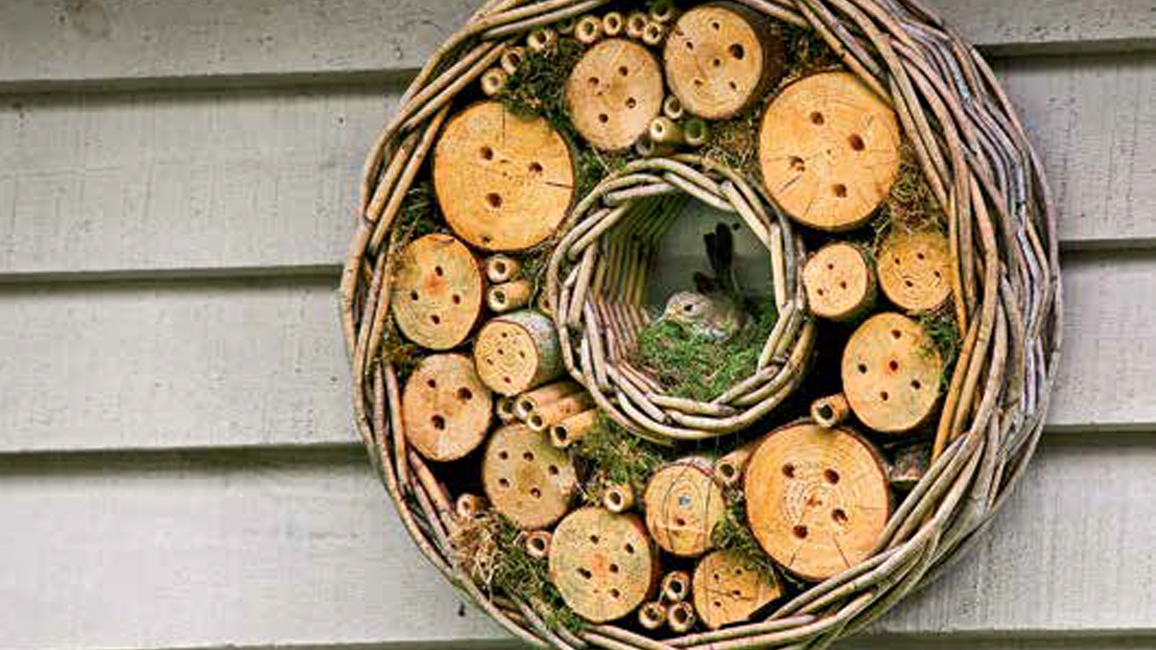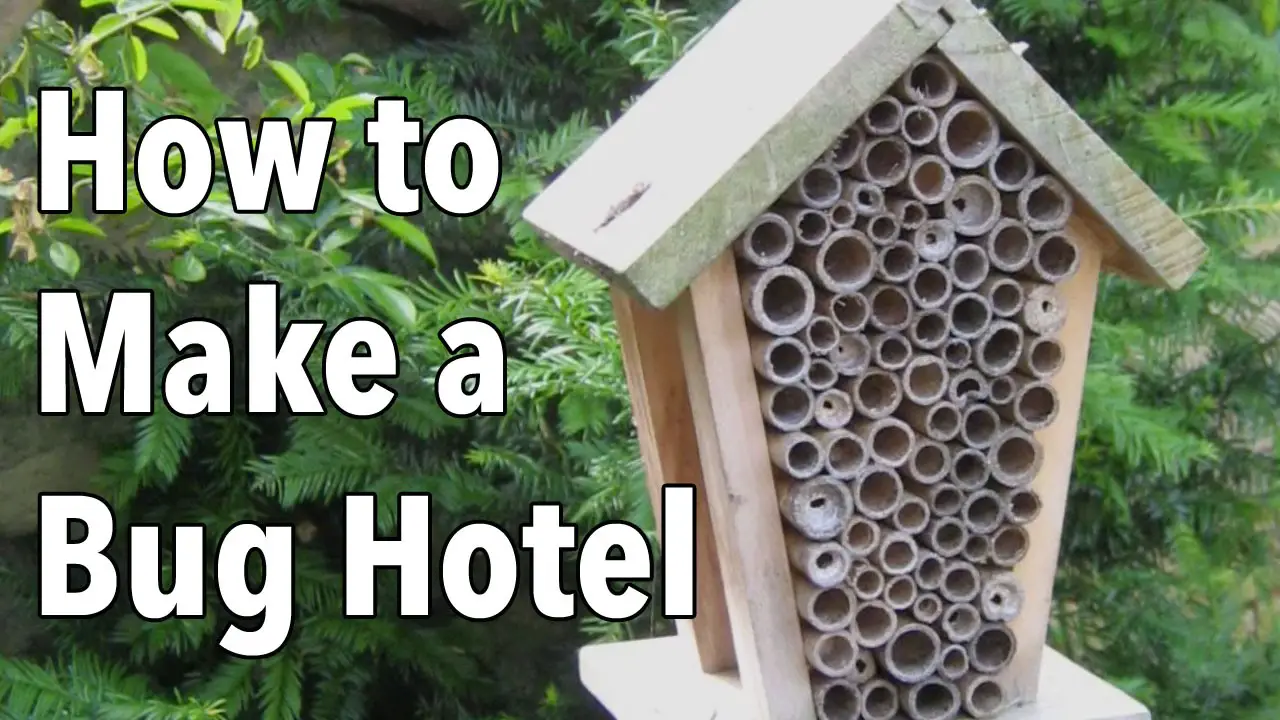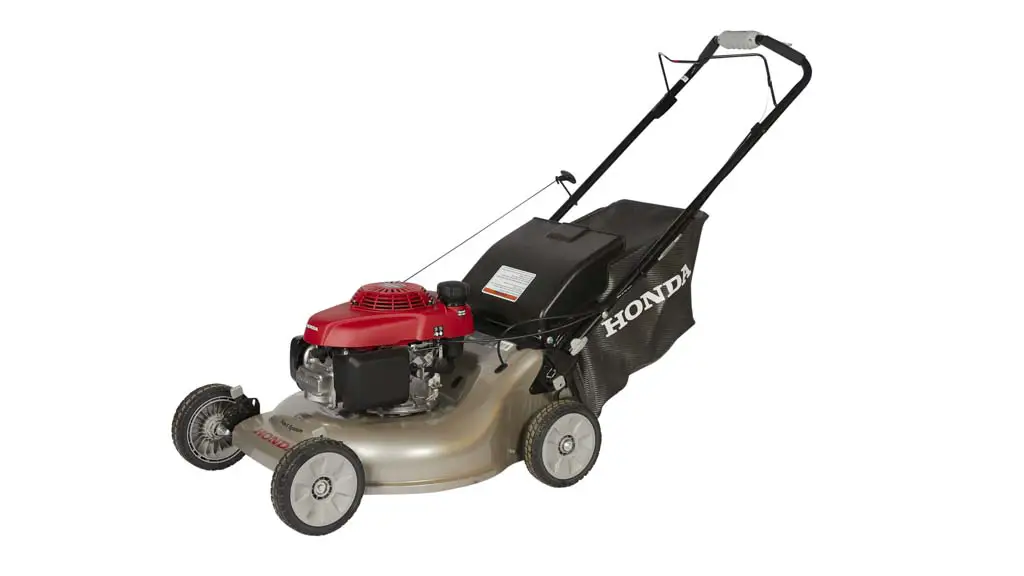What makes the bug hotel unique? The bug hotel is unique because it is a place where bugs can stay and be safe from predators. The hotel also has a variety of different rooms for different types of bugs.
Bug hotels are unique for several reasons, making them valuable additions to gardens and natural spaces:
- Biodiversity Support:
- Bug hotels provide habitats for a variety of beneficial insects, promoting biodiversity. Different insects, including solitary bees, ladybugs, lacewings, and beetles, find shelter and breeding sites in these structures.
- Pest Control:
- Many of the insects that inhabit bug hotels are natural predators of garden pests. For example, ladybugs and lacewings feed on aphids and other harmful insects, helping to naturally control pest populations without the need for chemical pesticides.
- Pollination:
- Solitary bees, which often use bug hotels, are excellent pollinators. They contribute to the pollination of flowers, fruits, and vegetables, enhancing garden productivity and biodiversity.
- Educational Value:
- Bug hotels serve as educational tools, allowing people, especially children, to learn about insect behavior, ecology, and the importance of insects in the ecosystem. They offer a hands-on way to observe and study insect life.
- Habitat Creation in Urban Areas:
- Urbanization and agricultural practices have led to a decline in natural habitats for many insects. Bug hotels help mitigate this by providing alternative nesting sites in areas where natural habitats are scarce.
- Customization and Creativity:
- Bug hotels can be customized with different materials and designs to attract specific insects. Common materials include bamboo, straw, hollow stems, and drilled wood. This customization makes each bug hotel unique in its ability to cater to different insect species.
- Sustainable Gardening:
- By supporting beneficial insects, bug hotels contribute to sustainable gardening practices. They help maintain a healthy balance in the garden ecosystem, reducing the need for artificial interventions.
- Aesthetic Appeal:
- Well-designed bug hotels can be aesthetically pleasing, adding a decorative element to gardens and outdoor spaces. They can be crafted in various shapes and sizes, often becoming a focal point in garden design.
The uniqueness of bug hotels lies in their multifunctionality—providing ecological, educational, and aesthetic benefits while supporting a diverse range of insect species essential for healthy ecosystems.
Building a Bug Hotel | Biodiversity
The bug hotel is a unique place for bugs to stay. It is made up of different materials that bugs can use to make their homes. These materials include: sticks, leaves, pinecones, and acorns.
The bug hotel also has a water source, which is important for bugs to have. This water source can be in the form of a small pond or a bowl of water with rocks in it. The bug hotel is also unique because it is located in a forest where there are many other insects and animals.
This makes the bug hotel a great place for bugs to find food and shelter.
Facts About Bug Hotels
If you’re looking to add some natural flair to your garden or backyard, a bug hotel is the perfect way to do it! Bug hotels provide homes for all sorts of beneficial insects, from bees and ladybugs to lacewings and spiders. Not only are they fun to build and look at, but they also play an important role in keeping your garden healthy.
Here are some facts about bug hotels that will have you eager to start your own:
Beneficial insects are attracted to bug hotels because they offer a variety of shelters and food sources. By providing a home for these helpful critters, you’ll be encouraging them to stick around and do their part in pollinating your plants and controlling pests.
You don’t need to spend a lot of money on materials for your bug hotel – most things can be found right in your own backyard or neighborhood. Sticks, stones, leaves, pine cones, and other natural materials make excellent building blocks for insect homes. Simply get creative and put together a structure that will offer different types of bugs a place to stay.
Building a bug hotel is a great activity for kids (and adults!) of all ages. It’s a fun way to learn about the importance of insects in our ecosystem while getting some fresh air and spending time outdoors. Plus, it’s something the whole family can enjoy together.
So what are you waiting for? Get started on your very own bug hotel today!
Why are Bug Hotels Important
As the world becomes increasingly urbanized, there is a growing need to find ways to incorporate nature into our everyday lives. One way to do this is by creating bug hotels. Bug hotels are man-made structures that provide shelter and food for insects.
They can be made from a variety of materials, such as wood, straw, leaves, and even recycled materials like cardboard tubes and egg cartons. Bug hotels provide a valuable service to both humans and insects. For humans, they offer a way to connect with nature and learn about the important role that insects play in our ecosystem.
For insects, they provide much-needed habitat that has been lost due to development and other human activities. There are many reasons why bugs are important. They help pollinate plants, which are essential for producing food crops.
They also help control populations of other pests by preying on them or competing with them for food sources. In addition, some bugs produce substances that can be used medicinally or industrially (e.g., silk from caterpillars). Creating bug hotels is a simple way to make a positive impact on your local environment.
How to Attract Insects to Insect Hotel
Insect hotels are a great way to attract insects to your garden or yard. They provide a safe place for them to live and breed, and can help control pests in your area. Here are some tips on how to build and maintain an insect hotel:
1. Choose a location for your insect hotel that is sheltered from the wind and gets plenty of sun. Insects like warm, protected places to live.
2. Build or purchase a structure that has several chambers of different sizes.
This will give different types of insects a place to stay. Make sure there are openings on both sides of each chamber so insects can come and go as they please.
3. Fill the chambers with materials that will attract and shelter different types of insects.
Some examples include wood chips, straw, leaves, sand, mud, and shredded paper or cardboard. You can also add things like broken eggshells, pieces of fruit, or bits of pollen to attract specific types of insects.
4. Check your insect hotel regularly to make sure it is clean and dry inside.
Remove any debris or dead insects so new ones can move in.
What to Put in an Insect Hotel
If you’re looking to give some local insects a place to stay, why not build them an insect hotel? Insect hotels can be as simple or elaborate as you like, and provide a great way to help out your local ecosystem. Here’s what you’ll need to get started:
Materials: – A container of some sort. This can be anything from a recycled milk carton to a wooden box.
Just make sure it has plenty of holes for ventilation. – A variety of materials for the insects to nest in. This can include things like bamboo sticks, hollowed out logs, straw, leaves, and even egg cartons.
Get creative! – Some rocks or pebbles for drainage. Instructions:
1. Start by drilling or punching holes in your container for ventilation. If using a wooden box, you may want to line the bottom with hardware cloth or chicken wire to keep pests out.
2. Fill the bottom of the container with drainage material such as rocks or pebbles.
What is a Bug Hotel
A bug hotel is a structure built to provide shelter for insects. Insects are important in the ecosystem and a bug hotel can help increase their population. Bug hotels can be made from a variety of materials, such as wood, straw, leaves, and mud.
They often have many chambers of different sizes to accommodate different types of insects. Some bug hotels even have special features like water sources and places for pollen or nectar.
Building a bug hotel is a fun project that can be done by people of all ages.
It’s a great way to learn about different types of insects and how they contribute to the environment. Plus, it’s satisfying to know you’re providing a home for these creatures!

Credit: rangerrick.org
What is the Best Aspect for a Bug Hotel?
There are many different aspects that can make a bug hotel the best place for insects. Some of these include:
Location: The bug hotel should be located in an area where there is a good amount of foot traffic.
This will ensure that the insects will have plenty of potential mates to choose from. Additionally, the location should be free from any pesticides or other chemicals that could harm the bugs.
Size: The size of the bug hotel should be large enough to accommodate all of the insects that you wish to attract.
However, it should not be so large that it becomes unmanageable or difficult to clean.
Materials: The materials used in constructing the bug hotel should be safe for both humans and insects. Avoid using any treated lumber or other materials that could contain harmful chemicals.
Instead, opt for natural materials like stone, wood, or bamboo.
Where is the Best Place for a Bug Hotel?
A bug hotel is a structure made up of different materials that provides housing for insects and other small animals. These hotels can be made from a variety of materials, such as straw, wood, leaves, and even recycled materials like plastic bottles or tin cans. The size of the bug hotel will depend on the amount of space you have available, but it is important to make sure that it is large enough to accommodate the number of insects you wish to attract.
When choosing a location for your bug hotel, there are a few things to keep in mind. First, you’ll want to choose an area that receives plenty of sunlight during the day. This will ensure that the insects are able to stay warm and active.
Additionally, you’ll want to avoid locations that are prone to flooding or excessive moisture, as this can create conditions that are unfavorable for insect life. Finally, try to select a spot that is close to some plants or trees; this will provide the bugs with a food source as well as a place to hide if necessary.
What are the Best Materials for a Bug Hotel?
There are a few different types of materials that you can use for a bug hotel, and it really depends on what type of bugs you’re looking to attract. If you want to attract bees, then using materials like straw or moss is a good idea. If you’re looking to attract ladybugs, then using materials like leaves or petals will be more effective.
Ultimately, it really just depends on what type of insects you’re hoping to attract, and then finding the right material to match.
Conclusion
The bug hotel is a unique structure that allows for many different types of insects to live in close proximity to one another. This close living quarters creates an environment where the insects can share resources and help one another survive. The bug hotel also provides a safe place for insects to mate and lay their eggs.

“My name is Leo Jacob, and I hold a Bachelor of Science degree with Honors in Applied Environmental Science and Sustainability from the University of the West of Scotland. Since childhood, I’ve been passionate about living an eco-friendly life. After completing my studies, I dedicated myself to finding simple ways to lead a more environmentally conscious lifestyle. I launched ecolifely.com to share my educational background and practical experiences with everyone, hoping to inspire others to join me in creating a greener, more sustainable world.”













Leave a Reply